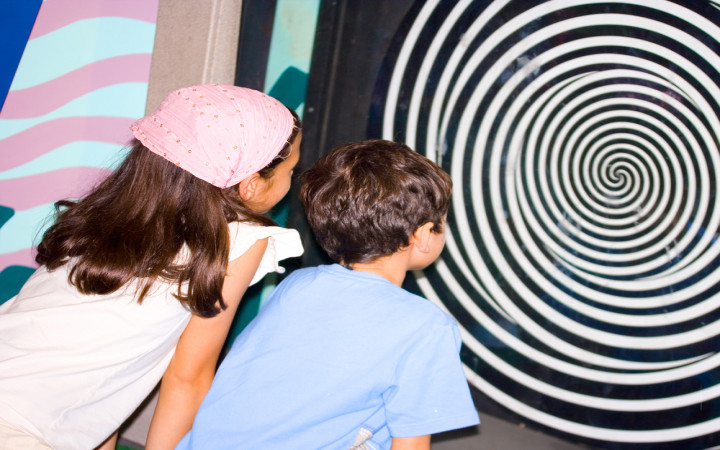Do your eyes ever play tricks on you? Maybe you've seen something that puzzled you so much that you had to rub your eyes and look again? Chances are you may have been tricked by an optical illusion.
Optical illusions are images or pictures that we perceive differently than they really are. Put another way, optical illusions occur when our eyes send information to our brains that tricks us into perceiving something that does not match reality.
The word “illusion" comes from the Latin word illudere, which means “to mock."
Some optical illusions are physiological. This means that they're caused by some sort of physical means in the eyes or the brain.
The Mach band illusion is an example of a physiological illusion. The line in the middle of the picture is one solid color. However, because of how the eye's retina filters the different shades on either side of the line, the right side of the line appears darker, while the left side of the line appears lighter.
Other optical illusions are cognitive. Cognitive illusions, such as ambiguous, distorting and paradox illusions, occur when our brains automatically make assumptions based on the information sent from the eyes. These illusions are sometimes called “mind games."
Ambiguous illusions are pictures or objects that can be seen in more than one way. Rubin's vase is one popular example of an ambiguous illusion. Can you see both the vase and the two faces?
Distorting illusions use different techniques to make objects of similar size, length or curvature appear distorted. A famous example of a distorting illusion is the Müller-Lyer illusion.
Doesn't the line in the middle look longer than the ones above and below it? However, all three lines are the same length!
Paradox illusions occur as a result of pictures or objects that cannot exist or are physically impossible. Paradox illusions are popular in works of art, such as those made famous by artist M. C. Escher.
His Waterfall is a classic example of a paradox illusion. Do you see how the water from the waterfall appears to travel uphill before once again reaching the top of the waterfall?
Scientists believe optical illusions are possible because our brains are so good at recognizing patterns and “seeing" familiar objects. Our brains work quickly to make a “whole" image from separate pieces.
Clever artists can use these tendencies to trick our eyes and brains into seeing what's not really there!




